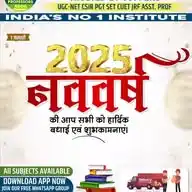
UGC NET JRF notes Professor Adda Institute
June 9, 2025 at 05:19 AM
JUNE 2025 EXAM
PAPER 1 JRF TOPIC
Topic: Communication – Types, Models, and Barriers
Source - PROFESSOR ADDA NOTES BOOKLET
Effective communication is fundamental to all human interaction.
👉 The process of communication comprises several elements: sender, message, channel, receiver, feedback, and noise.
UGC --NET / JRF ASST PROFESSOR 2025
Send Your Subject & Medium to get notes
WhatsApp link click 👇👇👇
👉 *For English Medium Students*
https://wa.me/+919216009964?text=Send_me_notes_my_subject_is
👉 *हिंदी माध्यम स्टूडेंट्स के लिए*
https://wa.me/+919257007505?text=Send_me_notes_my_subject_विषय_है
*There are mainly four types of communication:*
1. Verbal Communication – Includes oral and written forms such as speeches, conversations, letters, and emails.
2. Non-verbal Communication – Uses body language, gestures, facial expressions, and tone to convey messages.
3. Visual Communication – Utilizes images, graphs, charts, and symbols.
4. Digital Communication – Takes place via electronic means such as social media, messaging apps, and emails.
Communication Models help in conceptualizing how communication works.
▪️ Aristotle’s Model (Rhetorical Model) – One-way communication focused on the speaker.
▪️ Shannon and Weaver Model (1949) – Introduced the concept of “noise” and feedback.
▪️ Berlo’s SMCR Model – Focuses on Source, Message, Channel, and Receiver.
▪️ Schramm’s Model – Introduces the concept of “field of experience” shared by both sender and receiver.
▪️ Helical Model by Frank Dance – Communication is continuous and evolving.
Barriers to Communication include:
▪️Semantic Barriers – Misinterpretation of words and symbols.
▪️Psychological Barriers – Emotional interference like fear, anger, or mistrust.
▪️Organizational Barriers – Ineffective structure or hierarchy.
▪️Cultural Barriers – Differences in cultural background and language.
▪️Technological Barriers – Lack of access or technical skills.
🔹 According to the UNESCO report, communication competency is essential for sustainable development and participatory democracy.
🔹 Shannon and Weaver’s 1949 model is widely cited in both engineering and social science contexts.
🔹 Mehrabian’s theory (1971) states that 93% of communication is non-verbal (55% body language, 38% tone of voice).
🔹 The Ministry of Education's NEP 2020 emphasizes integrating communication skills across academic disciplines.
🔹 Albert Mehrabian and Wilbur Schramm are often referenced in research for communication efficiency.
🔹 Berlo’s model is frequently asked in both teaching and research aptitude sections.
🔹 Case Study: In the 2004 Indian Ocean Tsunami, failure in timely communication of warnings resulted in extensive loss of life – highlighting the importance of effective communication systems in disaster management.
🔹 In corporate settings, cross-cultural communication training is now a mandatory HR practice in multinational organizations.
All type notes 🔥
[ Throry + Unit MCQ + PYQ + Model Papers + Explanations + Toppers Tool Kit + Margdarshika Guide + PYQ rend Analysis + Amriut Booklet ]
All Subject Available
Both Medium ( हिंदी / English )
UGC --NET / JRF ASST PROFESSOR 2025
.
.
Send Your Subject & Medium to get notes
WhatsApp link click 👇👇👇
👉 *For English Medium Students*
https://wa.me/+919216009964?text=Send_me_notes_my_subject_is
👉 *हिंदी माध्यम स्टूडेंट्स के लिए*
https://wa.me/+919257007505?text=Send_me_notes_my_subject_विषय_है
Join @Professors_Adda India's No -1 NET /JRF Institute Helpline No- 7690022111